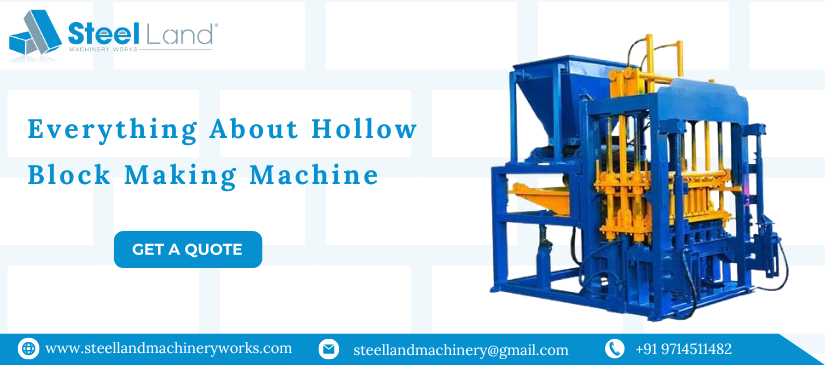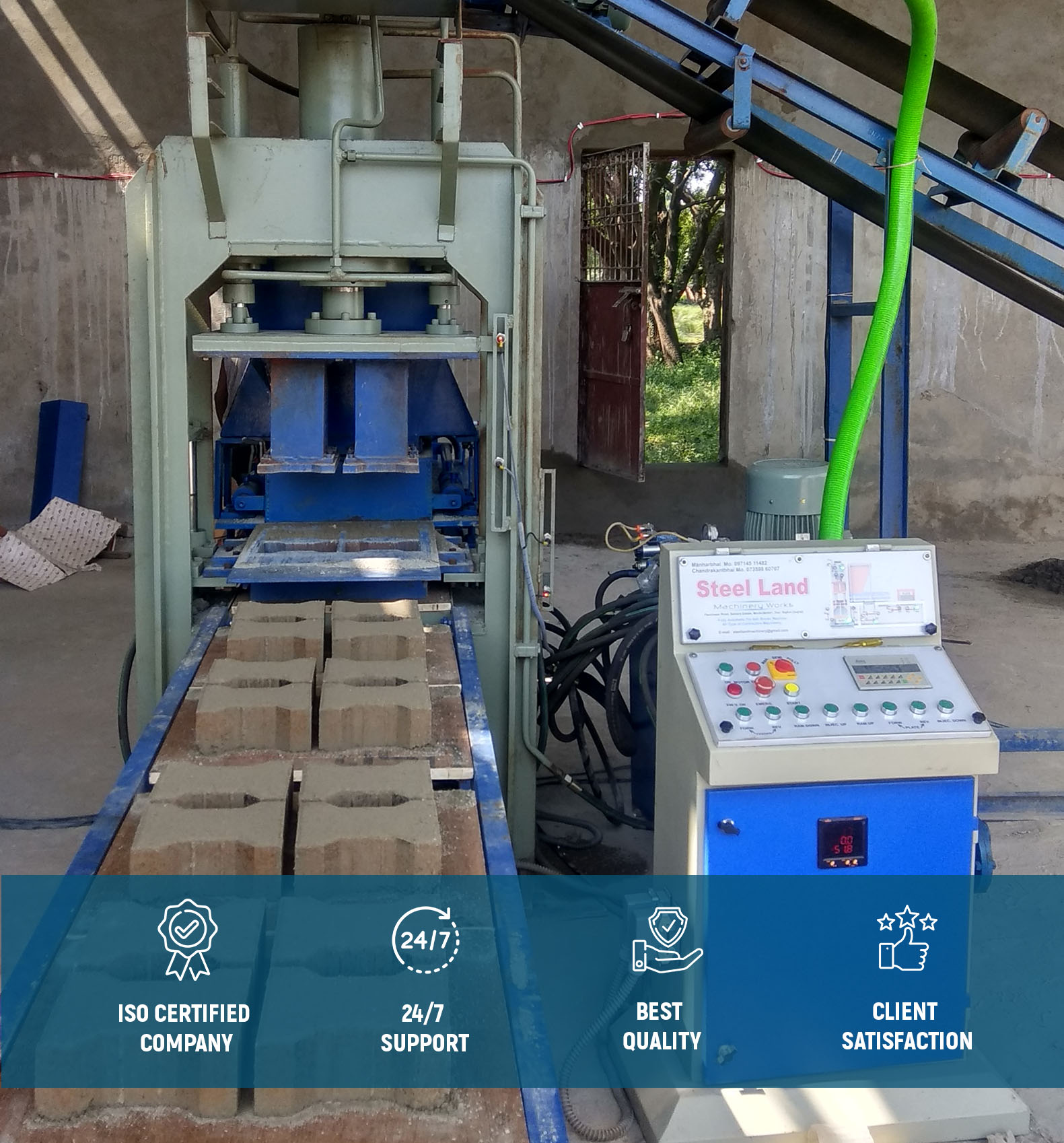People have varying images and thoughts of the hollow block producing machine when we discuss it, so it’s important to be clear about what we mean when we use this term. An automatic hollow block making machine is a device that forms hollow blocks by compressing concrete mortar into moulds and forming the concrete blocks by vibration and pressure. The hollow block machine uses a variety of concrete block-shaped moulds, and it uses hydraulic power and vibration to press mortar into the moulds as it is poured inside of them. Concrete hollow blocks are shaped in this manner.
Categories of hollow block making machine
1. Mobile hollow block making machine
While the mobile machine is more affordable and easier to use, most tasks such as mixing concrete, moving mortar to the machine, and running the equipment are still done by hand. When compared to the fixed hollow block machine, this equipment’s capacity is likewise limited. This device is appropriate for low-budget, small-scale tasks.
2. Stationary hollow block making machine
The stationary hollow block producing machine comes in various types, automation levels, and extra parts. It is a larger and more powerful piece of equipment overall. This device is a mobile machine’s industrial equivalent. During an eight-hour shift, the smallest stationary hollow block machine yields 4.000 pieces of hollow concrete blocks or 12.000 pieces of paving blocks, while the largest stationary machine yields 24.000 pieces of hollow concrete blocks or 56.000 pieces of paving blocks.
Working of Hollow Block Making Machine
The mortar must first be properly prepared using the appropriate ratio. Typically, four units of sand plus additives are combined with one unit of cement. After that, you must add just enough water to the mortar to make it into a paste. The mixer is used for this action. While some stationary hollow block building machines prepare the mortar entirely automatically, others do it just partially. Several factors, such as the market’s capacity needs and the budget, come into play.
Initially, mortar is loaded into a device known as a mortar cart, which moves back and forth to fill the mould. The mortar begins to shake as the mould is filled, filling the microscopic spaces between the sands. As the machine vibrates, the mortar’s surface diminishes. Before the press begins its work, the mortar cart begins to fill the mould one last time. The pallets with the top and bottom moulds are pressed on their surface. Both moulds rise when pressing occurs, and the pallet is automatically sent to the hollow block machine’s output.
Choice of pallets
A forklift or a finger car system operates the hollow block producing machine’s automatic pallet gathering system. It is quicker and uses less room for the drying portion. This is due to the fact that pallets are delivered and stored manually, one by one, in the manual machine, but they are first transported to be dried after being stacked in five layers.
A minimum of two workers and a maximum of eight are required for a hollow block facility. Only your degree of automation will determine this. You are best suited for a semi-automatic machine if you reside in a nation with low labour and land prices.
It is advised that you purchase automatic machinery for higher output levels due to the reduced land requirement; robots with larger capacities perform better in this regard. The hollow block forming machine’s output capacity determines the differences in pallet sizes. For instance, pallets with a 4 cm thickness must be 100 cm by 50 cm for PRS-400 and 95 cm by 110 cm for PRS-800.



